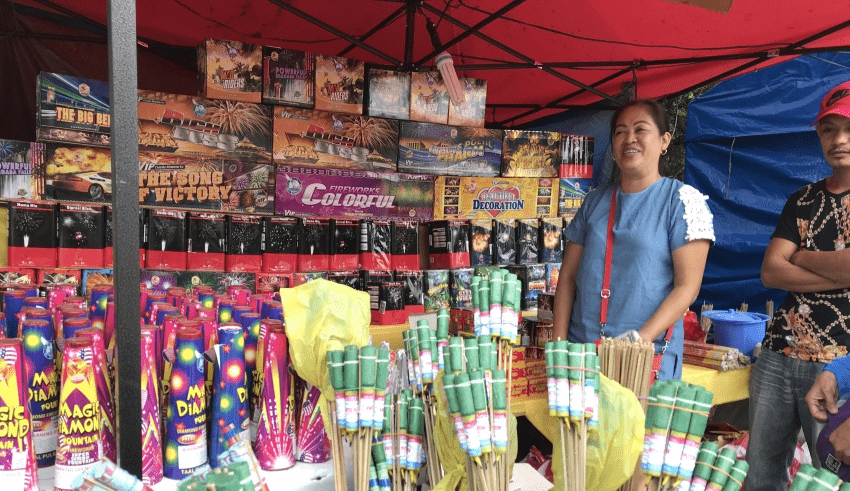Few things you should know about fireworks and firecrackers before New Year’s Eve

New Year’s Eve or Bisperas ng Bagong Taon is a time of celebration with booming sounds and colorful night skies. In order to bring in a prosperous New Year, Filipinos follow several rituals. A variety of round-shaped fruits, eating pancit (noodles) for longevity and fortune, scattering coins around the house, keeping all the lights on, having to wear polka-dot clothing for good luck, and, of course, it wouldn’t be New Year’s Eve in the Philippines without fireworks in the sky.

With that said, here are a few things you should know about fireworks before New Year’s Eve:
Famous Filipino Firecrackers
Filipinos go all out with the noise on New Year’s Eve, just like Americans do on the Fourth of July. Here are some well-known firecrackers you might encounter:
- Sinturon ni Hudas or Judas’ Belt is a famous string of firecrackers Filipinos consistently use.
- Kwitis is from the Spanish word cohetes, which refers to a small rocket that shoots up the sky and explodes.
- Bawang is tied with abaca string and wrapped in the shape of garlic.
- Sparklers give off colorful sparks, flames, and other effects when lit up.
- Luces is more about emitting beautiful light rather than being explosive.

Prohibited Firecrackers
The hazardous chemicals released during fireworks displays can cause serious harm to the human body. Republic Act No. 7183 governs the distribution and use of fireworks in the interest of public safety. Here are a few popular and illegal firecrackers you may be familiar with:
- Piccolo has been the leading cause of firecracker-related injuries since 2007.
- Goodbye Philippines the giant triangle-shaped firecracker which packs a powerful explosion.
- Lolo Thunder is a powerful firecracker twice the size of a Five Star.
- Watusi causes poisoning when absorbed, especially among kids.
- Boga is a traditional PVC pipe cannon that fires denatured alcohol as its explosive substance.
Aside from that, Five Star, Pla-Pla, Giant Bawang, Giant Whistle Bomb, Atomic Bomb, Super Lolo, Atomic Triangle, Large-size Judas Belt, Kwiton, and Kabasi among others are prohibited by the RA 7183. One of the most atmospheric pollution occurrences over a year is the New Year’s Eve fireworks. Most of the particles produced by burning explosives are made up of metals and their compounds, which are used in fireworks displays.
A reminder: PLEASE USE FIRECRACKERS MODERATELY.
The Local Government Units (LGUs) shall strictly enforce Executive Order No. 28 series of 2017 or the Regulation and Control of the Use of Firecrackers and Other Pyrotechnic Devices in order to control the emissions from the use of firecrackers, which may cause smog and harm to people.
Emissions from firecrackers mainly comprise combustion products of the contents of the firecrackers namely: Particulate Matter (PM), Nitrogen Oxide (NOx), Ozone (O3), Carbon Monoxide (CO), Sulfur Dioxide (SO2), and Metals. Particulate Matter (PM) may contain heavy metals brought about by the composition of the fireworks which undergo combustion during events such as the firing of the firecracker.
Celebrate the New Year with a good mindset! Whatever tradition or culture we follow on New Year’s Day, whether it is fireworks, dining, rituals, resolutions, or anything else, what’s important is recognizing and handling the fireworks with utmost care. Don’t you agree that being knowledgeable is a clever way to have a prosperous year ahead?
Joyce Margaux is a driven journalism student looking to improve her writing abilities and become a better version of herself. When it comes to duties being completed, she values time management and consistency. She considers herself as a responsible and orderly person that yearns to live the best life











